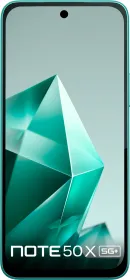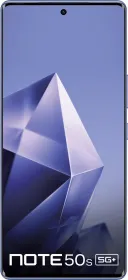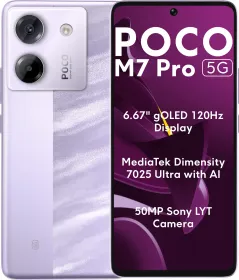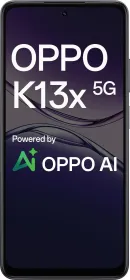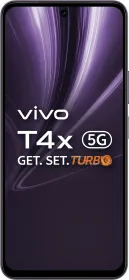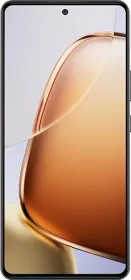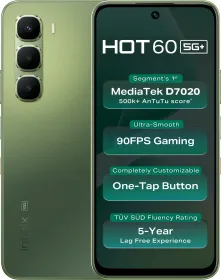It’s not every day you see a newcomer like Infinix squaring off against a titan like Samsung in the budget smartphone arena. The Infinix Note 50X and Samsung Galaxy F16 are two 5G handsets launched recently, targeting the sub-12K segment in India. Let’s break down how these two stack up.
Design, Colors, and Build Quality
The Infinix Note 50X sports a glass front with a plastic back and frame, available in Sea Breeze Green, Enchanted Purple and Titanium Grey. The green variant features a vegan leather finish for a premium touch. It’s also MIL-STD-810H compliant, hinting at durability, though it’s not a rugged phone by any means.

The Samsung Galaxy F16 keeps it simple with a glass front, plastic back, and plastic frame in Bling Black, Vibing Blue, and Glam Green. It’s very slightly thinner and lighter, which might appeal to those who prefer a sleeker feel.

ALSO READ: Best AI Mobile Phones Under Rs. 20,000
Dimensions & Weight
- Infinix Note 50X: 165.4 x 76.4 x 8.0/8.2 mm, 195.4 g or 198.9 g
- Samsung Galaxy F16: 164.4 x 77.9 x 7.9 mm, 191 g
Infinix goes bold with an octagonal “gem-cut” camera module and an RGB notification light on the back, dubbed Active Halo, which lights up for notifications, charging, or gaming effects. It’s a standout feature that some users might like.

Samsung’s F16, meanwhile, opts for a minimalist look with a vertically stacked camera. It’s less flashy but feels familiar if you’re used to Samsung’s understated style.
The Galaxy F16 uses a dated U-shaped notch, while the Infinix Note 50X goes for the more modern punch-hole design. Plus, the Note 50X’s IP64 rating offers better dust and water resistance than the F16’s IP54, making it a tad more resilient against splashes.

Display
The Infinix Note 50X rocks a 6.67-inch IPS LCD with a 120 Hz refresh rate, hitting 560 Nits (672 peak) of brightness. It’s smooth for scrolling and gaming but lacks the vibrancy of an AMOLED panel. What’s also lacking is the resolution here, at 720p.

The Samsung Galaxy F16 counters with a 6.7-inch Super AMOLED display at 90Hz and 800 Nits (HBM). The higher resolution (1080 x 2340 vs. 720 x 1600) and richer colors make it a clear winner for media consumption, though the lower refresh rate and the U-shaped notch are drawbacks to consider.

ALSO READ: Best Phones Under Rs. 20,000 For Battlegrounds Mobile India (BGMI) In 2025
Performance
The Note 50X’s MediaTek Dimensity 7300 Ultimate (4nm) is a powerhouse in this segment, with an octa-core setup (4×2.5 GHz Cortex-A78 & 4×2.0 GHz Cortex-A55) and Mali-G615 MC2 GPU. It’s built for gaming, supporting 90 FPS in titles like CODM and Free Fire Max, and 60 FPS in BGMI. It’s a very capable chipset for this price, to say the least.

The Galaxy F16’s MediaTek Dimensity 6300 (6nm) is less impressive, pairing 2×2.4 GHz Cortex-A76 cores with 6×2.0 GHz Cortex-A55 and a Mali-G57 MC2 GPU. It’s fine for daily use but lags behind in gaming grunt. The AnTuTu score of the F16 is much lower than that of the Note 50X.

Storage-wise, both offer microSDXC expandability, but the Note 50X starts at 6GB RAM, while the F16 dips to 4GB in its base variant. Both use LPDDR4X RAM and UFS 2.2 storage. When it comes to performance, the Note 50X is a clear winner, and it’s not even close.
Software
Infinix’s Note 50X runs Android 15 with XOS 15, packing AI goodies like Circle to Search, Folax AI Assistant, AI Call Assist, Live Translate, and AI-generated portraits. It’s a fun, customizable experience, though you’re limited to 2 OS updates and 3 years of security patches. Some bloatware is present, but most can be uninstalled.

Samsung’s F16 launches with Android 15 and One UI 7, giving you a polished interface and 6 years of OS and security updates. The catch? More bloatware, much of it unremovable, and occasional lag in the UI. You get no AI features here, and the One UI 7 is pretty limited—like you still don’t get screen recording here.

Personally, I would pick the Note 50X when it comes to the software, even though it only gets 2 OS updates. This is because it packs a host of AI features, including Circle to Search, runs smoother, and has basic features like screen recording and app lock too.
ALSO READ: Top Smartphones Launching in April 2025: Samsung Galaxy S25 Edge, Moto Edge 60 Fusion & More
Connectivity
Both phones support 5G, so you get future-proofed network speeds. The Note 50X offers Wi-Fi 6 (dual-band), Bluetooth 5.4, GPS, and USB-C 2.0 with OTG. It also throws in an IR blaster for controlling appliances, a very handy extra you don’t often see.

The Galaxy F16 sticks to Wi-Fi 5 (dual-band, Wi-Fi Direct) and Bluetooth 5.3. It adds NFC for contactless payments (Samsung Wallet), a feature the Note 50X skips. There is no IR port or radio here, though.

Cameras
The Note 50X boasts a single rear setup: 50MP wide (f/1.6, 1/2.76-inch), with an 8MP (f/2.0) front camera. It shoots 4K@30fps video, a rarity at this price. The main camera is good for this segment, especially with the large f/1.6 aperture.

The F16 boasts a triple camera setup—50MP wide (f/1.8, 1/2.76-inch) + 5MP ultra-wide (f/2.2, 1/5-inch) + 2MP (f/2.4). There’s also a 13MP (f/2.0, 1/3.1-inch) selfie shooter. Video tops out at 1080p@30fps with gyro-EIS for stability. This is also a solid camera setup for this price.

Battery Life and Charging
The Note 50X’s 5,500 mAh battery outlasts the F16’s 5,000 mAh, and its 45W charging (plus 10W reverse wired and bypass charging) gets you juiced up faster. Bypass charging is a neat trick for gamers, keeping the phone cool during long sessions. You also get the charger in the box.

The F16’s 25W charging is slower, and it lacks extras like reverse charging. You also don’t get a charger inside the box. For battery and charging, the Note 50X takes the crown.
ALSO READ: Top 10 Phones in India under Rs 10000 | Best Mobiles to buy Under 10000
Infinix Note 50X vs. Samsung Galaxy F16: Tech Specs
| Specs | Infinix Note 50X | Samsung Galaxy F16 |
| Dimensions | 165.4 x 76.4 x 8.0/8.2 mm | 164.4 x 77.9 x 7.9 mm |
| Weight | 195.4 g or 198.9 g | 191 g |
| Screen | 6.67-inch HD IPS LCD, 120Hz | 6.7-inch FHD Super AMOLED, 90Hz |
| Chipset | MediaTek Dimensity 7300 Ultimate (4nm) | MediaTek Dimensity 6300 (6nm) |
| Memory & Storage | 6GB/128GB, 8GB/128GB | 4GB/128GB, 6GB/128GB, 8GB/128GB |
| Cameras | Rear: 50MP, Front: 13MP | Rear: 50MP + 5MP + 2MP,Front: 8MP |
| OS | Android 15, XOS 15 | Android 15, One UI 7 |
| Software Support | 2 OS updates, 3 years security | 6 OS updates, 6 years security |
| Battery | 5,500 mAh, 45W charging | 5,000 mAh, 25W charging |
| IP Rating | IP64 | IP54 |
Price
Infinix Note 50X
- 6GB + 128GB: ₹11,499
- 8GB + 128GB: ₹12,999
Samsung Galaxy F16
- 4GB + 128GB: ₹11,499
- 6GB + 128GB: ₹12,999
- 8GB + 128GB: ₹14,499
Conclusion

The Infinix Note 50X has only two real drawbacks: fewer OS updates and a 720p LCD display. But beyond that, it offers much better value for most users. Performance is noticeably stronger, which is a big deal at this price, and the cameras hold up well against the Galaxy F16. The biggest difference, though, is the pricing—the 8GB variant of the Note 50X is cheaper, giving it a clear advantage.
So yes, the Note 50X is the better choice overall. If you still prefer the Galaxy F16, it’s a decent option, but just keep in mind that you’ll get lower performance, possibly some lag, and you’ll be paying more—plus, Samsung doesn’t even include a charger in the box, while Infinix does. Which one would you pick? Let us know in the comments below.
You can follow Smartprix on Twitter, Facebook, Instagram, and Google News. Visit smartprix.com for the latest tech and auto news, reviews, and guides.















